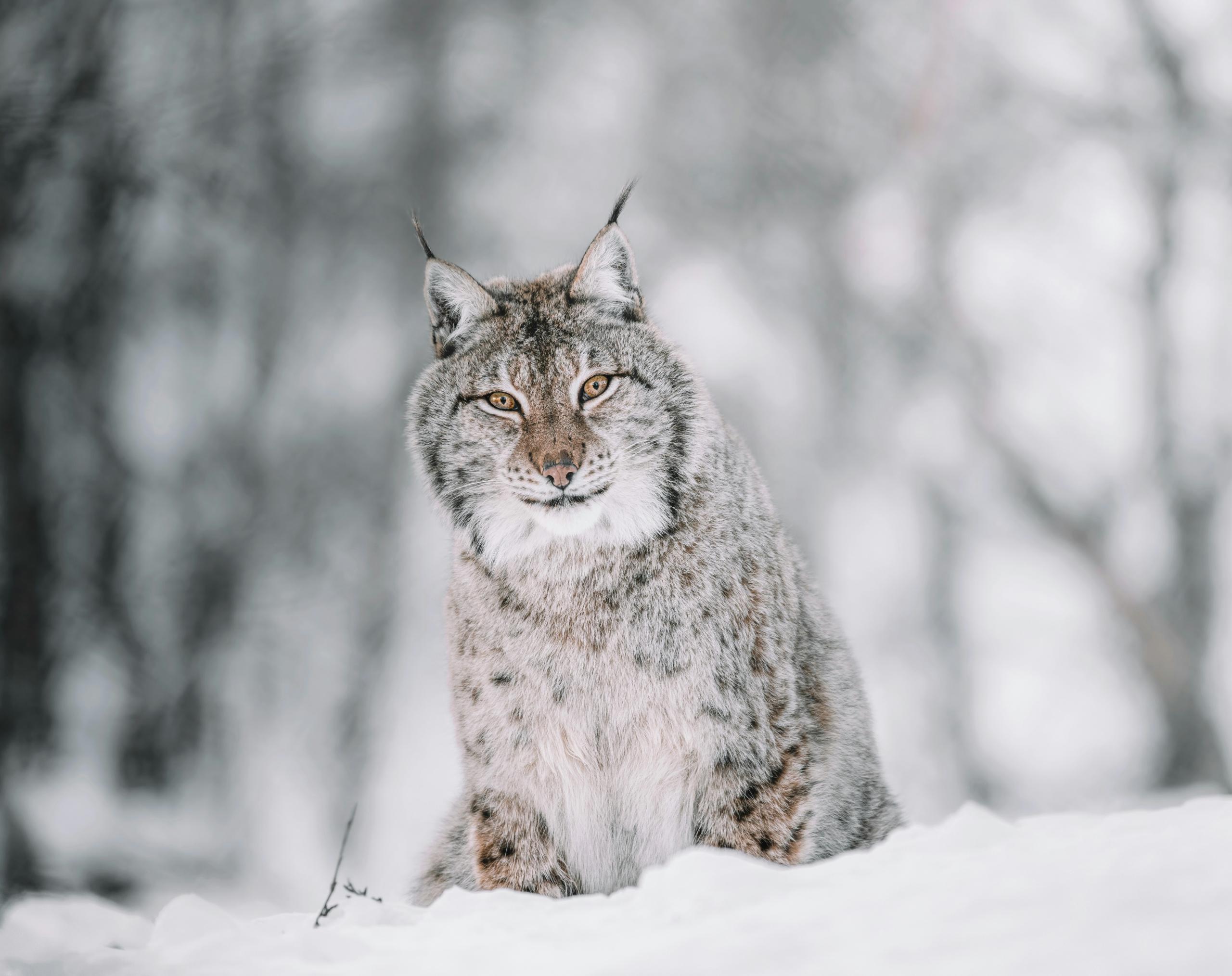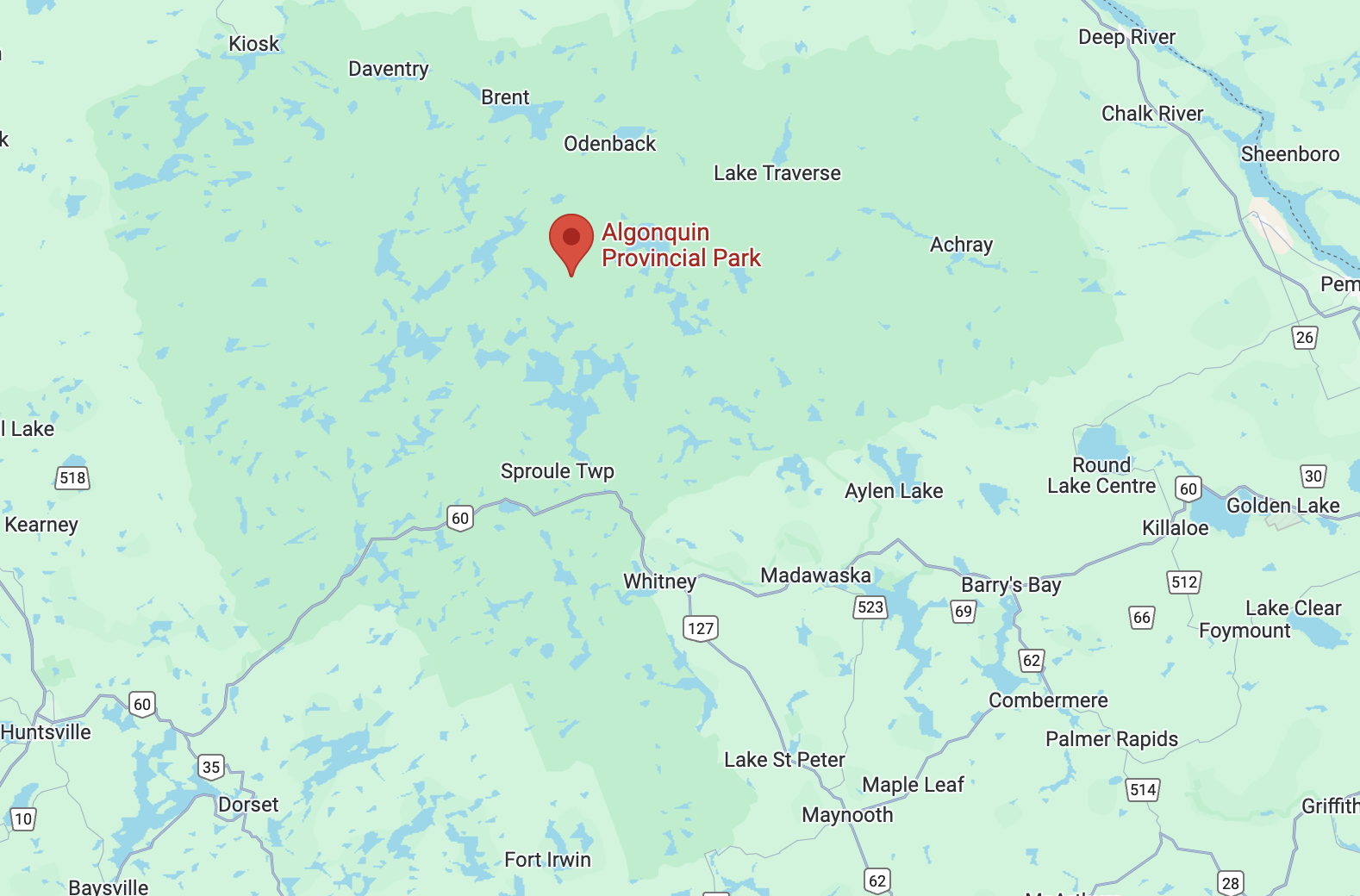The Canada Lynx, with its tufted ears and snowshoe-like paws, is a masterful predator and a vital component in maintaining the balance of North America’s boreal forests. Known for its stealthy hunting abilities, the lynx plays a crucial role in controlling prey populations, primarily snowshoe hares, which in turn helps protect the vegetation and ecosystem as a whole. In this article, we will explore the fascinating world of the Canada Lynx, its unique characteristics, its role in ecosystems, and the threats it faces today.

What is a Canada Lynx?
The Canada Lynx is a medium-sized wild cat native to North America’s northern forests, particularly in Canada and parts of the northern United States. Known for its distinctive features — such as long legs, tufted ears, and a short tail with a black tip — the lynx is perfectly adapted to its cold, snowy environment. Its thick silvery-grey fur provides warmth and camouflage in the snow, while its large paws, which act like snowshoes, allow it to walk easily on top of deep snow without sinking.
Unlike many other wild cats, the Canada Lynx is highly specialized, relying almost exclusively on one prey species: the snowshoe hare.
The Canada Lynx is known for being a solitary and elusive animal, rarely seen by humans due to its preference for the dense boreal forests where it spends most of its time. Its behavior is shaped by the need to hunt and survive in these harsh environments. Lynx are most active at dusk and dawn, coinciding with the activity patterns of their primary prey, the snowshoe hare.
While they are capable climbers and swimmers, the lynx prefers to hunt on land, using its stealth and agility to ambush prey. Despite being elusive, the Canada Lynx is crucial in controlling prey populations, making it an essential part of the northern wilderness ecosystem.

The Canada Lynx mate in late winter, typically between February and March. During this period, males will travel long distances in search of females. After a gestation period of about 63 days, the female will give birth to a litter of 1 to 4 kittens, usually in May or June. The mother raises the young alone, and they stay with her until the fall, learning to hunt before they venture out alone.
The reproductive success of the Canada Lynx is closely tied to the population cycle of the snowshoe hare, meaning that in years when hare populations are low, lynx litters tend to be smaller, or breeding may not occur at all.
Canada Lynx vs. Bobcat: Key Differences
One of the most frequent questions about the Canada Lynx is whether it is the same as a bobcat, similar to how people often compare moose and caribou. While these species share certain physical traits, there are clear differences that set them apart.
The Canada Lynx is slightly larger than the bobcat, with long legs, larger paws, and a more pronounced ruff of fur around its face. Its body is built for life in snowy environments, with wide paws that act like snowshoes, enabling the lynx to walk on top of the snow, whereas bobcats are less specialized for such conditions.
The fur of the Canada Lynx is thicker and more silvery-grey in color, while the bobcat’s coat tends to be tawny or reddish-brown with distinctive black spots. Additionally, though both species have tufted ears, the lynx’s ear tufts are longer and more pronounced. Their tails also differ: the bobcat has a tail with black rings, while the Canada Lynx sports a solid black-tipped tail.
These adaptations make the lynx uniquely suited to the colder, snow-covered habitats of the northern boreal forests, while bobcats are more versatile and thrive in various climates.
Where Do The Canada Lynx Live?
Though elusive and rarely seen by humans, there are several places where the Canada Lynx population is stable, and you might be lucky enough to spot one in the wild:
The Canada Lynx primarily inhabits the expansive boreal forests of North America, which stretch across Alaska, much of Canada, and parts of the northern United States, including Montana, Idaho, and Washington.
The forests in these areas are filled with coniferous trees like spruce, fir, and pine, providing perfect cover for the Canada Lynx as it stealthily hunts. The dense underbrush and snowy terrain suit the lynx’s snowshoe-like paws, helping it move effortlessly across snow where other predators struggle.
These cold, snowy landscapes are crucial for the lynx’s survival. Its primary prey, the snowshoe hare, also relies on snow for protection, creating a vital predator-prey relationship. Lynx thrive in regions where snow lasts longer, offering both the cover and hunting grounds they need.

Yukon, Canada
The remote and wild terrain of the Yukon offers an excellent chance to see the Canada Lynx. The region’s thick boreal forests and long winters create an ideal environment for the lynx while also hosting the famous Porcupine Caribou Migration.
Denali National Park, Alaska
Known for its stunning landscapes and protected wildlife, it's home to a healthy population of Canada Lynx. The park’s forests and abundant snowshoe hare population make it a prime location for lynx to thrive, and it’s also a region where polar bears can be spotted along the Alaskan coastline.


Glacier National Park, Montana
Lynx were reintroduced to Glacier National Park, where the cold, mountainous terrain and forests offer an ideal habitat. Though rare, sightings are increasing as the park’s efforts help the predator make a comeback.
Algonquin Provincial Park, Ontario
This park is known for its rich biodiversity and protected habitats. Algonquin’s boreal forests provide ample prey and shelter for Canada Lynx, making it one of the best spots to catch a glimpse of these wild cats in Ontario.

These locations offer a combination of dense forest cover and long-lasting snow — both essential elements for lynx survival. If you plan to visit any of these areas in search of a Canada Lynx, winter is the best time, as their tracks are more visible in the snow and are more active while hunting snowshoe hares. However, given the lynx’s shy and solitary nature, sightings remain rare, even in prime locations.

What Does The Canada Lynx Eat?
The Canada Lynx is a specialist predator, and its diet is largely dependent on the snowshoe hare. This predator-prey relationship is critical for both species, as the lynx relies on the hare for most of its food. In fact, the lynx’s survival is closely tied to the hare’s population cycles, which fluctuate over approximately 10-year periods.
During times when hare populations are high, the lynx population also increases. However, when hare numbers drop, the lynx must travel further and expend more energy to find food, which affects reproduction rates and overall survival.
In addition to snowshoe hares, the Canada Lynx will occasionally hunt other small mammals and birds, such as mice, voles, ptarmigans, grouse, and red squirrels. However, none of these secondary prey species are abundant enough to sustain a lynx population, making the snowshoe hare essential to the lynx’s diet.
Why is the Canada Lynx Facing Critical Threats to Its Survival?
Although the Canada Lynx is not officially endangered across its entire range, several serious threats threaten its future, particularly in the United States. From habitat destruction to climate change, these factors are contributing to the decline of species in certain regions.
Habitat Loss: The Impact of Human Activity
One of the most significant challenges for the Canada Lynx is habitat loss. As logging, urban development, and wildfires continue to shrink the dense forests the lynx relies on, it loses crucial hunting grounds and shelter. These changes are especially damaging in the southern parts of its range, where human activity is more concentrated. Lynx populations struggle to survive and reproduce without sufficient forest cover and access to prey like the snowshoe hare.
This loss of habitat also impacts other iconic wildlife, such as the moose, which shares these northern forests and depends on similar habitats for food and shelter.

Climate Change: A Shrinking Snowy Habitat
Another major threat to the Canada Lynx is climate change. The lynx is highly adapted to snowy environments, where its wide paws allow it to move effortlessly across deep snow. However, some areas' rising temperatures and declining snowfall reduce the lynx’s habitat. Less snow hinders the lynx’s ability to hunt and impacts the snowshoe hare, its primary food source. As snow-covered areas become less common, the lynx faces greater competition from other predators and diminishing prey availability.
Fragmented Populations: The Challenge of Isolation
In the United States, the Canada Lynx population is increasingly fragmented into small, isolated groups. This fragmentation limits genetic diversity, making it harder for lynx populations to recover from environmental changes or inbreeding. Isolated populations are more vulnerable to local extinctions, and the lack of genetic exchange between groups threatens the species’ ability to adapt and survive in the long term.
The combination of habitat loss, climate change, and population fragmentation poses serious risks to the Canada Lynx, and conservation efforts must focus on these critical areas to ensure the species’ future.
The Canada Lynx has excellent night vision, which is 6 times more powerful than a human’s!
Conclusion
The Canada Lynx is a vital part of North America’s boreal ecosystem, helping to keep prey populations in check and maintain the delicate balance of its habitat. While rare and often elusive, the Canada Lynx continues to capture the imaginations of wildlife enthusiasts and conservationists alike. With the right protections and conservation efforts, we can ensure that this iconic predator remains a part of the wild landscape for generations.
If you’re passionate about wildlife, be sure to explore the rest of the diverse wildlife of Canada. It opens up a world of natural wonders, revealing the beauty and complexity of the country’s ecosystems
















